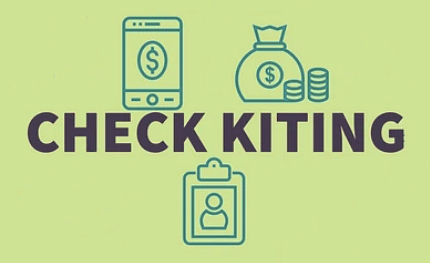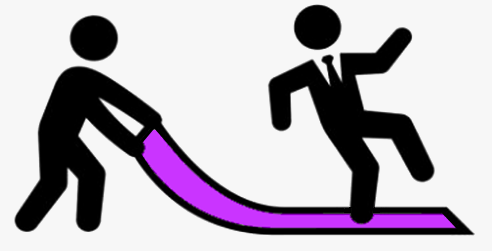Accredited InvestorsAltcoinAnatoli UnitskyAnti-Money Laundering (AML) In CryptoAPIArbitrageArtCoin TokenArticle DirectoryASICAuction Terminology GlossaryBasics of Stock Market InvestingBear MarketBest Crypto Payment Provider In the WorldBitcoinBlockchainBlockchain ConfirmationBlockchain Consensus MechanismBlockchain ForkBlockchain GlossaryBored Ape Yacht ClubBuild a Business That OutperformsBull MarketBuying SkyWay SharesByzantine Fault Tolerance (BFT) ExplainedCasascius CoinCentral Bank Digital Currency (CBDC)Centralized Crypto ExchangeCoinCoinsetCold WalletCollateralCommodity Futures Trading Commission (CFTC)Cross-Chain TechnologyCRUCrypto ExchangeCrypto GlossaryCrypto JokesCrypto Terms to KnowCrypto TickerCryptocurrencyCryptographyCryptojackingCryptounit BlockchainCryptounit GlossaryCryptounit ProgramdApp (Decentralized Application)Dead CoinDecentralized Exchange (DEX)Decentralized Finance (DeFi)Difference Between Bitcoin and EthereumDifferent Ways of Investing MoneyDigital CurrencyDistributed LedgerDo Your Own Research (DYOR)Dollar Cost Averaging (DCA)Dow Jones Industrial Average (DJIA)EncryptionERC-20ERC-721EthereumEvoScentFear Of Missing Out (FOMO)Fear, Uncertainty and Doubt (FUD)Fiat MoneyFNT Fintech CompanyGenesis BlockGlobal Unit PayGlossary of Banking TermsGlossary of Business TermsGlossary of Financial TermsHalvingHODLHot WalletHow Do I Start InvestingHow Rich is Satoshi Nakamoto?How to Create a BlockchainHow to Find Private InvestorsHow to Get Into FintechHow to Program Smart ContractsI Am Thrilled to Be a Part of This Global ProjectInitial Coin Offering (ICO)Initial Public Offering (IPO)Initial Token Offering (ITO)Innovation Basalt TechnologyInnovative Transportation TechnologiesInternational Bank Account Number (IBAN)Investing in Gold Mining StocksInvesting in Gold MiningJagerJoy of Missing Out (JOMO)Know Your Customer (KYC)LedgerLiquidity in CryptocurrencyMaker and Taker Fees in Crypto TradingMarket Capitalization (Market Cap)Meme CoinMetal Credit CardMetaMaskMillenials Now Have Access to Generational WealthMy Best Investment EverNew Digital EvolutionNFT GlossaryOff-Chain TransactionsOn-Chain TransactionsOpen Edition NFTPeer-to-Peer (P2P)Personal Loan GlossaryProbably the Best STO on the MarketProof of Stake (PoS)Real Estate Glossary of TermsReal Estate Investing GlossaryRebase TokenSecurities and Exchange Commission (SEC)Security Token ExchangesSecurity Token Offering (STO)Soulbound Decentralized Identities for Security TokensSoulbound ID Launch by Stobox Proves a SuccessSoulbound TokensStoboxStock Market GlossaryTestimonialsTether Platform and Token (USDT)UnitEx ExchangeUnitsky String TechnologiesUNTBUSDUValidatorWe Started Investing When We Were 25What are Blue Chip NFT?What are Blue Chip Stocks?What are Crypto Assets?What are Crypto Smart Contracts?What are CryptoPunks NFT?What are Digital Assets?What are Digital Collectibles?What are Gas Fees?What are Gas Wars?What are Hashmasks?What are Non Fungible Tokens?What are Non-Sufficient Funds (NSF)?What are Soulbound Tokens (SBT)?What are Stablecoins in Crypto?What are Transactions Per Second (TPS)?What are Utility NFTs?What are Utility Tokens?What Does Burning Crypto Mean?What Does Diamond Hands Mean?What Does Paper Hands Mean?What Does To The Moon Mean?What Does WAGMI Mean?What Happened to Satoshi Nakamoto?What is a 51% Attack?What is a Baby Boomer?What is a Backlink?What is a Banner?What is a Barcode?What is a Bid-Ask Spread in Crypto?What is a Block in Blockchain?What is a Block Reward?What is a Blockchain Address?What is a Blockchain Node?What is a Blockchain Oracle?What is a Blog?What is a Bond?What is a Bot?What is a Broker?What is a Business Accelerator?What is a Cash Cow?What is a Commercial Bank?What is a Commodity?What is a Con?What is a Credit?What is a Credit Limit?What is a Credit Rating?What is a Crypto Airdrop?What is a Crypto Bridge?What is a Crypto Scam?What is a Crypto Token?What is a Crypto Wallet?What is a Crypto Whale?What is a Crypto Winter?What is a Cryptocurrency Public Ledger?What is a Cryptocurrency Roadmap?What is a DAO?What is a Dark Pool?What is a Day Trader?What is a Dead Cat Bounce?What is a Default?What is a Derivative?What is a Digital Credit Card?What is a Fiscal Quarter?What is a Fungible Token?What is a Governance Token?What is a Grace Period?What is a Hard Fork?What is a Hot Wallet?What is a Hybrid Blockchain?What is a Hybrid PoW/PoS?What is a Joint Account?What is a Market Cap?What is a Merkle Tree in Blockchain?What is a Mining Farm?What is a Nonce? What is a PFP NFT?What is a POS System?What is a Prepaid Card?What is a Private Blockchain?What is a Private Key?What is a Public Blockchain?What is a Public Key?What is a Reserve Currency?What is a Ring Signature?What is a Routing Number?What is a Rug Pull in Crypto?What is a Safe Deposit Box?What is a Satoshi?What is a Security Token?What is a Seed Phrase?What is a Shitcoin?What is a Sidechain?What is a Soft Fork?What is a Spot Market?What is a State Bank?What is a SWIFT Code?What is a Tax Identification Number (TIN)?What is a Time Deposit?What is a Transaction Account?What is a Variable Interest Rate?What is a Virtual Assistant (VA)?What is a Virtual Card?What is a Virtual Currency?What is a Visa Card?What is a Whitelist in Crypto?What is a Whitepaper?What is Accounts Payable (AP)?What is AMA in Crypto?What is Amortization?What is an Accrual?What is an ACH Transfer?What is an Actuary?What is an Addendum?What is an Algorithm?What is an Angel Investor?What is an Annuity?What is an Asset?What is an ATM?What is an Atomic Swap?What is an Audit?What is an Avatar?What is an EIN?What is an Embargo?What is an Entrepreneur?What is an IDO (Initial Dex Offering)?What is an Interest Rate?What is an Internet cookie?What is an Investment Bank?What is an NFT Drop?What is an NFT Floor Price?What is an Ommer Block?What is an Orphan Block?What is an Outstanding Check?What is an Overdraft?What is Artificial Intelligence (AI)?What is B2B (Business-to-Business)?What is B2G (Business-to-Government)?What is Bartering?What is Bitcoin Dominance?What is Bitcoin Pizza Day?What is Blockchain Immutability?What is Blockchain Used For?What is BRICS?What is Business-to-Consumer (B2C)?What is C2C (Customer to Customer)?What is Capitalism?What is Catfishing?What is CFD Trading?What is Check Kiting?What is Cloud Mining?What is Communism?What is Content Marketing?What is Decentralization in Blockchain?What is DeFi in Crypto?What is Delisting?What is Depreciation?What is Digital Marketing?What is Diversification?What is Double Spending?What is Dumb Money?What is Dumping?What is Earnings Per Share (EPS)?What is Economics?What is Email Marketing?What is Equity?What is Etherscan?What is Fintech?What is Foreign currency?What is Forex?What is Fundamental Analysis (FA)?What is GameFi?What is Generative Art NFT?What is Gwei?What is Hard Currency?What is Hash Rate?What is Hashing in Blockchain?What is Inflation?What is Initial Game Offering (IGO)?What is Interest?What is Interest Income?What is Mainnet?What is Mastercard?What is Metaverse in Crypto?What is Mining in Cryptocurrency?What is Minting NFT?What is Mobile Banking?What is Money Laundering?What is NFT Alpha?What is NFT Metadata?What is NFT Rarity?What is NGMI Meaning?What is Nominal Interest Rate?What is Online Banking?What is Open-End Credit?What is OpenSea NFT Marketplace?What is Personal Identification Number (PIN)?What is Play-to-Earn?What is Polygon?What is Proof of Authority (PoA)?What is Proof of Work (PoW)?What is Public Key Cryptography?What is Pump and Dump?What is Quantum Computing?What is Refinancing?What is Retail Banking?What is Ripple?What is Sharding?What is Slippage in Crypto?What is Smart Money?What is Solvency?What is Soulbound ID?What is SSL?What is Staking in Cryptocurrency?What is Technical Analysis (TA)?What is Testnet?What is the Ask Price?What is the Better Business Bureau (BBB)?What is the Bid Price?What is the Dark Web?What is the InterPlanetary File System (IPFS)?What is the Gold Standard?What is the Lightning Network?What is the Prime Rate?What is the Sandbox?What is the Secondary Market?What is the World Bank?What is Tier 1 Capital?What is Tokenomics?What is TRC-20?What is Universal Banking?What is Unspent Transaction Output (UTXO)?What is Usury?What is Volatility in Crypto?What is Wash Trading?What is Web3?What is Whisper?What is XRP?What is Zero-Knowledge Proof (ZKP)?Who is Beeple?Who is Satoshi Nakamoto?Who is Vitalik Buterin?Why Tokenization is a Safe HavenWhy You Should Try Your Hand at Trading
What is Check Kiting?
- Home
- Glossary of Banking Terms
- What is Check Kiting?
Check kiting is a form of financial fraud that exploits the banking system's handling of checks, specifically the "float time" between a check's deposit in one bank and its clearance in another.

Typically, the perpetrator of this fraud writes a check from an account at Bank A, but deposits it at Bank B.
What is Check Kiting?
Kiting is a type of financial fraud that involves writing a check from one bank account and depositing it into another account, with the intention of withdrawing the funds before the check clears. This practice can result in significant losses for banks and other financial institutions, as well as for individuals and businesses that are victimized by this type of fraud.
Check kiting is illegal and can result in severe penalties, including fines, imprisonment, and a damaged reputation. However, despite the risks involved, some individuals and businesses continue to engage in check kiting, often believing that they will be able to get away with the fraud.
To understand how check kiting works, consider the following scenario:
Suppose that John has two checking accounts: one at Bank A and another at Bank B. John writes a check for $1,000 from his Bank A account and deposits it into his Bank B account. He then withdraws $500 from his Bank B account before the check clears. John repeats this process several times, each time depositing a check from Bank A into Bank B and withdrawing funds before the check clears.
Eventually, the banks catch on to John's activity and realize that he is engaging in check kiting. They may freeze his accounts, investigate the fraud, and potentially press charges against him. In addition to facing criminal charges, John may also be required to pay back any funds that he fraudulently obtained.
Check kiting can be difficult to detect, as it involves manipulating the timing of bank transactions in order to make it appear as though there are sufficient funds in an account. However, banks and other financial institutions have developed sophisticated fraud detection systems that can help identify and prevent check kiting.
To avoid falling victim to check kiting, individuals and businesses should take several precautions, including:
- Monitoring bank accounts regularly to detect any suspicious activity
- Verifying the validity of any checks received before depositing them
- Being cautious of any transactions that appear too good to be true, as they may be part of a check kiting scheme
- Reporting any suspected instances of check kiting to the appropriate authorities
Types of Check Kiting
There exist different forms of check kiting that individuals and corporations may employ, including:
Circular Kiting - This type of kiting involves multiple accounts held at different banks, which may be owned by the same individual, different individuals, or a group of individuals. The account holder writes and deposits checks, often of increasing amounts, between accounts to create an illusion of funds.
The 'Endless Kite' - In this form of kiting, a check is printed with the name, logo, and address of Bank A, but with a routing number from Bank B. Bank A does not recognize the routing number and sends the check to Bank B, which, in turn, returns the check to Bank A since it does not recognize the other details. This cycle can continue endlessly, even after the check amount has been credited to the depositor's account.
Retail-Based Kiting - This type of kiting involves a third-party, such as a grocery store, unwittingly providing temporary funds to an account holder. For example, an individual may write a check for an amount higher than the purchase price at a grocery store to get cash back, knowing they do not have sufficient funds in their account. They may cover the funds with a paycheck or deposit to prevent the check from bouncing or use the cash to deposit in their account and continue writing checks to cover the first check.
Corporate Kiting - This form of kiting involves a large scheme, which may amount to millions of dollars, to secretly borrow money or earn interest. This primarily applies to corporations that do not have limits on how much of their deposits are credited immediately. Unscrupulous managers or owners take advantage of this system by depositing bad checks and spending the funds.
Strategies for Mitigating Check Kiting Fraud
To prevent and deter check kiting fraud, banks have implemented several measures aimed at reducing the incidence of this financial crime. One strategy involves shortening the time it takes for checks to clear, which makes it more difficult for perpetrators to take advantage of the "float time" between deposit and clearance.
Additionally, banks may charge fees for returned checks and place temporary holds on deposited funds to prevent the availability of funds before checks have been cleared. By implementing these measures, banks aim to make check kiting less likely to succeed and reduce its occurrence.
Detecting Check Kiting: Key Indicators to Look for
To detect check kiting and prevent losses, banks must closely monitor account activity for specific indicators that signal the presence of this fraudulent scheme.
Some of the key indicators of check kiting include a high volume of check deposits daily, many checks drawn on the same bank, a significant proportion of un-cleared funds, and deposits made through multiple bank branches to obscure the volume of transactions.
By monitoring these indicators closely, banks can detect and investigate suspicious activity promptly and take necessary actions to mitigate potential losses.
The Effectiveness of Check Kiting Schemes
Check kiting can be an effective way for individuals to engage in fraudulent activities, particularly when carried out over an extended period of time. By writing and depositing checks in a seemingly normal manner, the related account can appear legitimate and be subject to fewer bank-imposed restrictions. Kiting schemes can also involve multiple banks, with the individual constantly shifting check payments between various accounts to stay ahead of the funds-clearing mechanism.
However, when a kiting scheme is eventually uncovered, it can create significant problems for the involved banks. Depending on which checks were written from which accounts and the timing of payments, one bank may be left with the bulk of the losses. Therefore, it is essential for banks to remain vigilant and detect any suspicious activity to prevent the occurrence of check kiting schemes.
Related Articles

What is a Crypto Scam
Check to see whether it's too good to be true: Cryptocurrency scammers sometimes offer unrealistically huge returns on your initial investment.

What is a Rug Pull in Crypto?
Anyone can set up a liquidity pool, and even an IDO with basic due diligence checks still has a high level of risk.
- Home
- Glossary of Banking Terms
- What is Check Kiting?